Shared Scenarios
Supported platforms:
Shared Scenarios are pre-configured Scenarios created by Gremlin users to test real-world failure modes, or to use as examples to customize to your needs. These scenarios have been shared by their creators in the hopes that others will find them useful. Shared Scenarios allow you to build up a library of reliability exercises that are customized to your company's applications and technology. If you've created a chaos experiment to reproduce an incident or identify reliability gaps in your applications you can now make it available for your co-workers. Sharing Scenarios enables you to easily create a templated Chaos Experiment that everyone can leverage across your company.
Shared Scenarios have a have a name, details section to outline a hypothesis and description, as well as the experiment configuration. Simply add the targets you want to experiment. Grow your company’s culture of reliability with Sharing Scenarios.
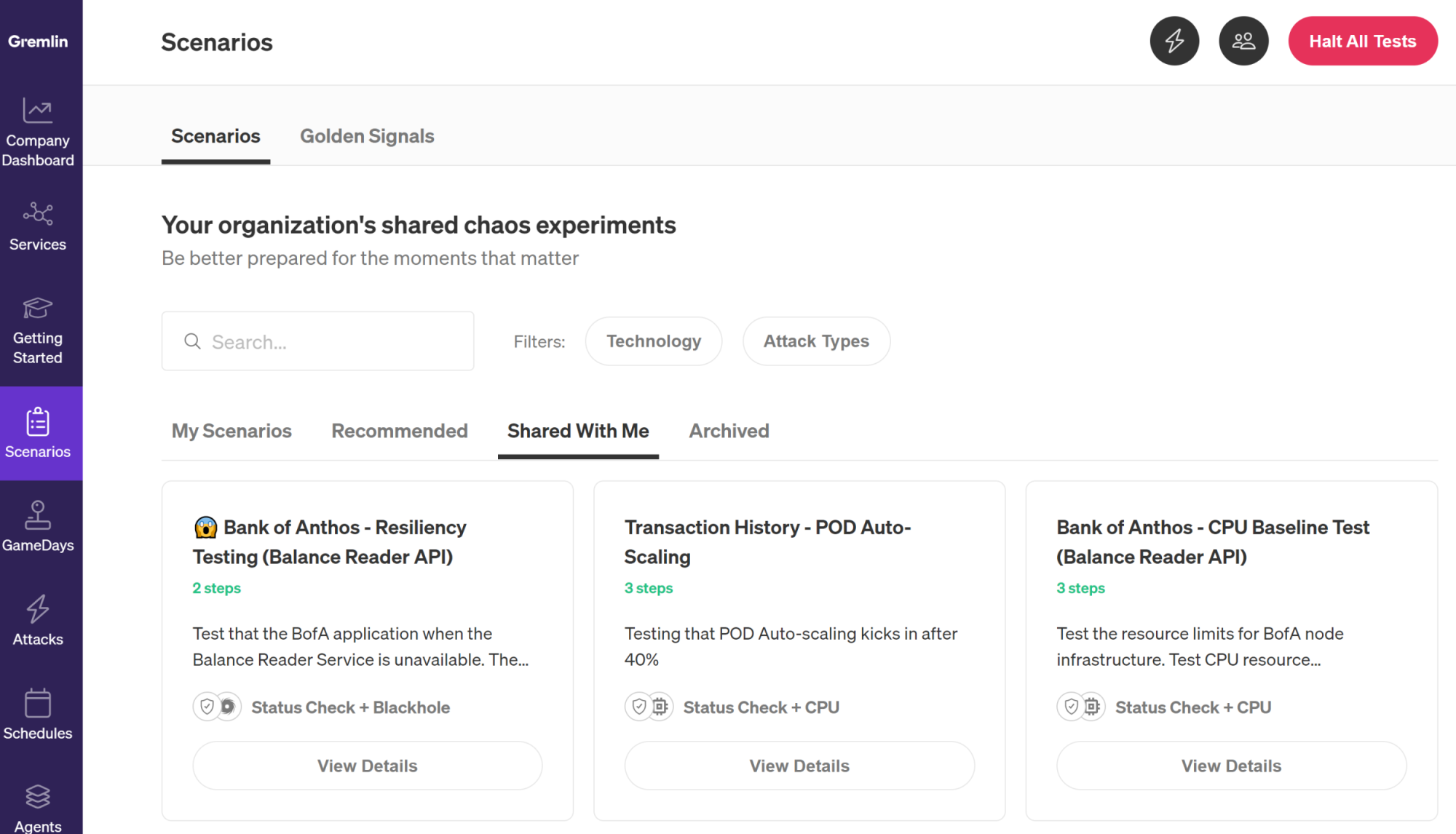
Sharing a Scenario
To share a Scenario, open the Scenario you want to share, and select "Share". The Scenario has to have at least one step and have been run once in order to share.

You can also share a Scenario from the Scenario list cards. Hover your cursor over the card to show the overflow menu. Click the overflow menu icon and select "Share".
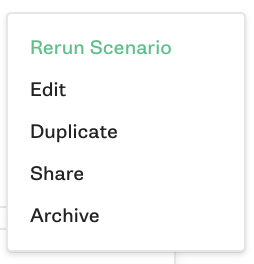
Sharing copies the Scenario as a template to the Shared With Me section under Scenarios. The copied Scenario keeps the target’s blast radius, experiment magnitude and any Health Check configuration, headers and success evaluations.
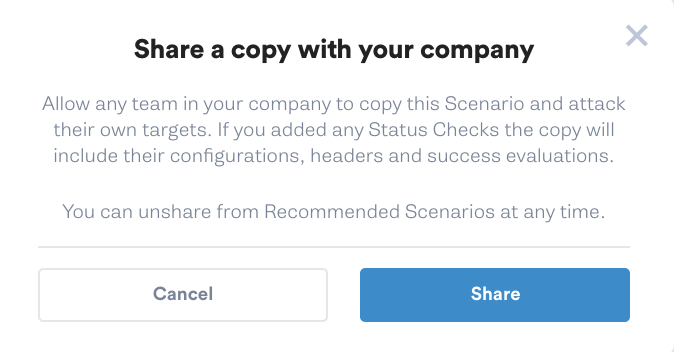
Company Owners, Company Admins, Team Managers, and Team Users have the capability to Share a Scenario within an organization. Team Users have the ability to run them by simply adding targets or customizing.
Sharing multiple Scenarios
To share multiple Scenarios, open the Shared With Me section under Scenarios, and select "Share a Scenario".
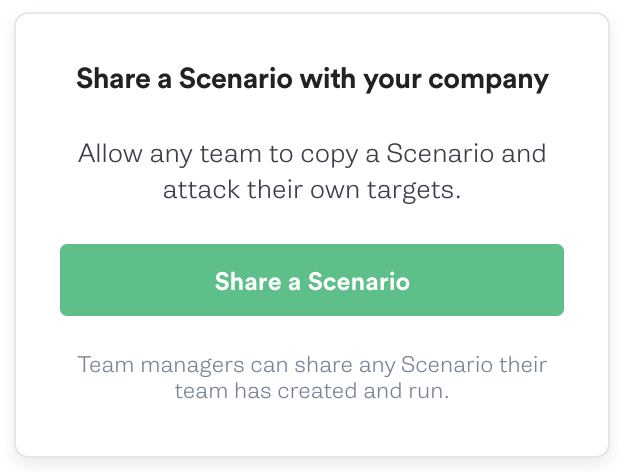
On the Scenario selection slide-out select one or multiple Scenarios to share with your organization.

Running a shared Scenario
To run a Shared Scenario, select "Add Targets and Run" from the Recommended Scenario's details page, select the targets to experiment, and select "Run Scenario". When adding targets to the Scenario, it adds the same tag selection to each of the experiments in the Scenario. To have different tags per step of a Scenario, or mix hosts and containers, either customize the Shared Scenario, or create a Custom Scenario.
Customizing a shared Scenario
To customize and run a Shared Scenario, select the Scenario you want to run, and select "Customize". You can also select "Add Targets and Run" from the Shared Scenario's details page, and select "Customize" on the targeting slide-out. This will create a copy of the Scenario and allow you to edit any of the fields, experiments, and targets of the Scenario. It can be saved as a draft or run.
When customizing the Shared Scenario, you can select different targeting options for each of the experiment steps in the Scenario.
Unsharing a Scenario
To unshare a Shared Scenario, open the Scenario you want to unshare, and select "Unshare". Unsharing removes the Scenario as a template in the Shared With Me section under Scenarios. Unsharing doesn't remove any copied version from a team that has run or customized the template.

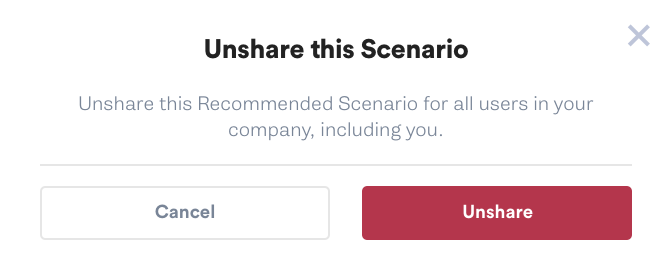
Company Owners, Company Admins, and Team Managers have the capability to Unshare a Scenario within an organization.



